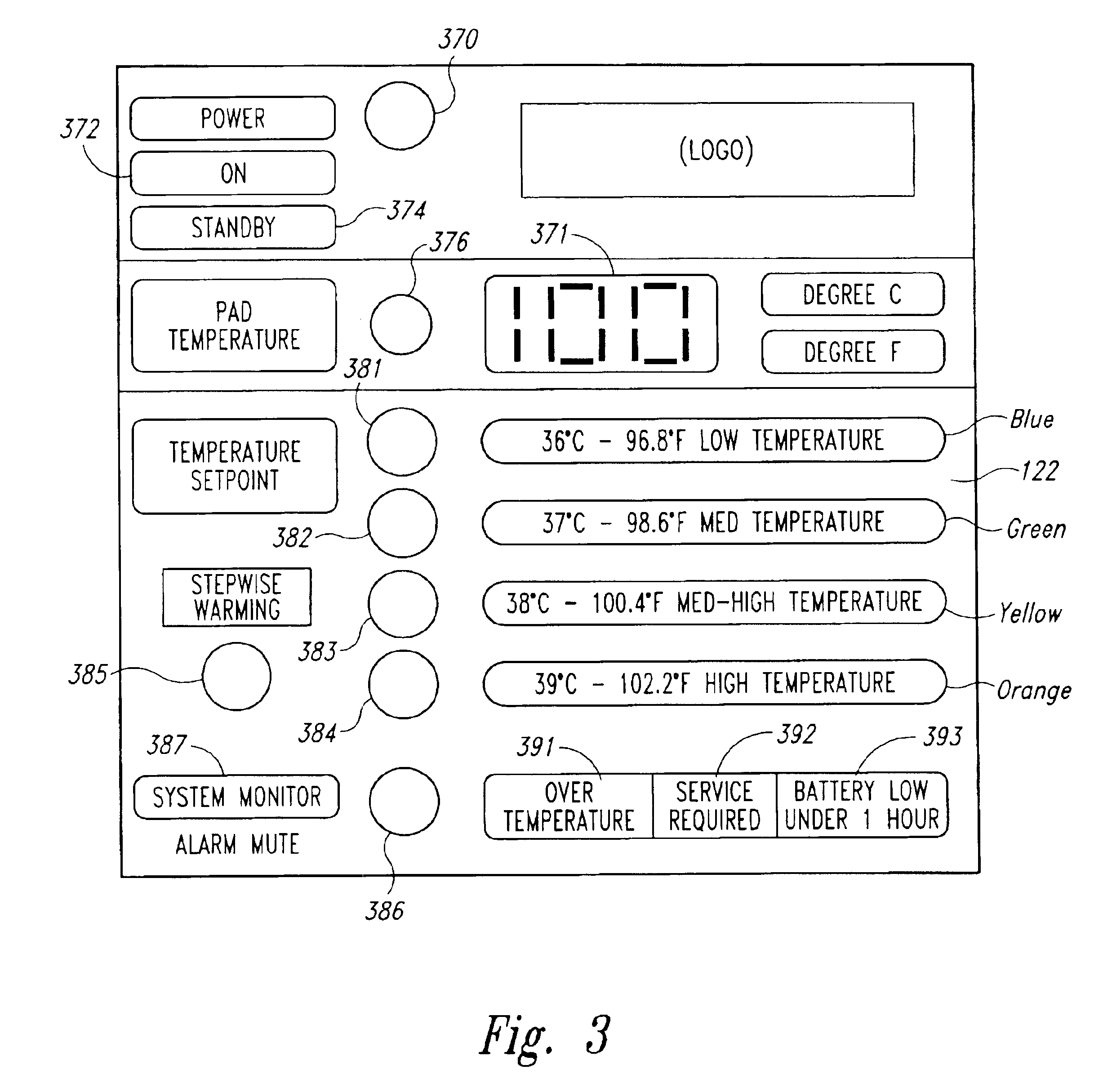Personal warming systems and apparatuses for use in hospitals and other settings, and associated methods of manufacture and use
a technology for warming systems and patients, applied in the field of personal warming systems and apparatuses, can solve problems such as prolonging or complicating recovery, accelerating a decline in patient body temperature, and difficulty in maintaining patient body temperature in a surgical setting
- Summary
- Abstract
- Description
- Claims
- Application Information
AI Technical Summary
Problems solved by technology
Method used
Image
Examples
Embodiment Construction
[0038]The following disclosure describes various aspects of personal warming systems for use in hospitals and other nonmedical settings. In one embodiment, a patient warming system configured in accordance with the present invention can include a heating pad configured to warm a patient positioned on the pad in a step-wise fashion, allowing the temperature to stabilize at each step before proceeding to the next step. One form of such step-wise warming can include warming the pad from 96.8° F. to 98.6° F. in a first step, warming the pad from 98.6° F. to 100.4° F. in a second step, and warming the pad from 100.4° F. to 102.2° F. in a third and final step. In one aspect of this embodiment discussed in greater detail below, warming the patient in a step-wise fashion may provide certain benefits over warming the patient directly from, for example, 96.8° F. to 102.2° F.
[0039]In another embodiment, a patient warming system configured in accordance with the invention can include a heating ...
PUM
 Login to View More
Login to View More Abstract
Description
Claims
Application Information
 Login to View More
Login to View More - R&D
- Intellectual Property
- Life Sciences
- Materials
- Tech Scout
- Unparalleled Data Quality
- Higher Quality Content
- 60% Fewer Hallucinations
Browse by: Latest US Patents, China's latest patents, Technical Efficacy Thesaurus, Application Domain, Technology Topic, Popular Technical Reports.
© 2025 PatSnap. All rights reserved.Legal|Privacy policy|Modern Slavery Act Transparency Statement|Sitemap|About US| Contact US: help@patsnap.com



